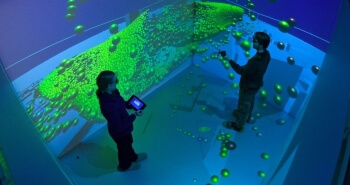
Random number generation
Random number generation, also referred to as RNG, is the coming up with a series of symbols or figures which cannot get predicted using an unsystematic chance. Usually, this generation gets done by use of a hardware random number generator.
RNG came to be centuries ago when people relied on forms such as shuffling of cards, flipping of coins, the rolling of dice as well as many other procedures which had unsystematic consequences. Over time, other methods came up as a way to make the generation much more manageable. You see, these techniques are entirely mechanical such that the production of a long series takes up a lot of time and energy. As such, there was a need for a system that could generate lots of figures while reducing the amount needed per series.
In the past, people would collect data from different generations and lay out the results on a table which they could refer to at later stages. With the growth of technology, people took to computers to help with the computations. These machines were able to run long series, enabling people to come up with lottery games.
There are many generation modes at present, many of which do not meet the aim of 'true randomness.' However, they manage to meet some standards at various levels. These standards extend to the degree to which the outcomes are discernible.
In spite of the many methods which fail to meet these standards, there are those that give accurate results such as Fortuna among others.
Uses

RNGs get widely used in computer simulations, gambling and statistics to name but a few. Generally, people use these methods in situations where getting an erratic outcome is desired. In cases where uncertainty is a primary concern such as in security systems, people prefer the use of hardware generators as opposed to pseudo-algorithms.
RNGs are essential in the development of simulations as they facilitate the running of series of unsystematic numbers time and time again by use of the same seed. People also make use of them in cryptography where they can generate a similar set of figures as long as the seed remains a secret.
When it comes to computer programming, the coming up with pseudo-unsystematic numbers is very critical. Different algorithms require varying amounts of apparent randomness. Take an example of cryptography. It requires a very high level of unpredictability whereas other systems such as computer games require much lower levels.
The difference between 'true' and pseudo-unsystematic numbers
There are two main modes in which these numbers can get computed. The first method deals with physical phenomena assumed to be unsystematic then goes ahead to compensate for biases during measurement. An example in such a case would be radioactive decay which would point to natural entropy origins.
The second method deals with computational algorithms which can give a long series of arbitrary results. The outcome depends on a small initial value called the key or seed value. With knowledge about this key, people can then reproduce the series.
Computational methods
Physical

People relied on modes such as coin flipping and rolling dice in the past to come up with sequences. However, these methods were slow when it came to processes such as statistical sampling, a shortcoming which called for innovation. These systems are still widely used in most casinos.
A physical RNG can get its basis from unsystematic physical phenomena whose unpredictability has its origin in the laws of quantum mechanics. Sources of entropy include clock drifts, radio noises and thermal noises amongst others. This data can get collected by various means such as by running a hash function against frames in a video stream.
People also look for entropy in human behavior. People are often unpredictable when playing games involving strategy and their movements can get recorded to create an adequate amount of entropy to create a key.
Computation
These methods use pseudo-random number generators to create long series of figures which have unsystematic properties. The numbers created can work for many situations but not in cases where high levels of uncertainty are essential. The generation gets done by use of a seed, which is a fixed number.
Most operating systems provide an avenue for such generations.
Probability distribution
Sequences can get generated based on probability density functions. In this method, the unsystematic number gets transformed, thus making it suitable for use in the computation of both 'true' and pseudo-random numbers.
Humans
People can also get used in the creation of arbitrary numbers. The downside to this is that humans tend to alternate between figures, thus leading to a degree of non-randomness.
There are many applications which gain from this sequencing. They include but are not limited to card games, the lottery, and bingo. Video games with an emphasis on unsystematic loot collection benefit a lot from true randomness because pseudorandom number generation can cause frustration as it can continue for a considerable amount of time before the target number gets hit. Boston Advanced Software Agency (BOSASA) helps companies in creating RNGs for security systems, games and other services, based on the levels of uncertainty the client requires.

